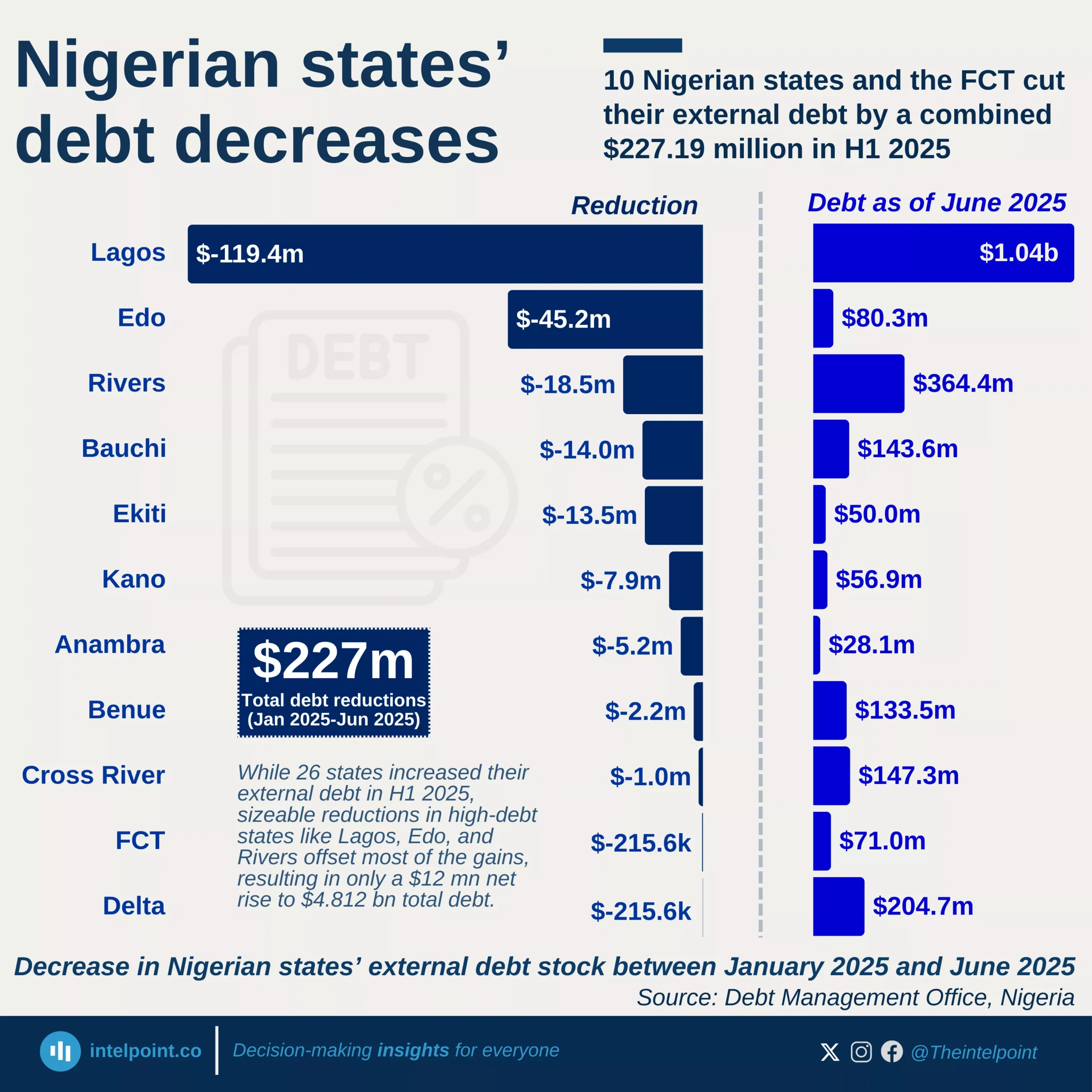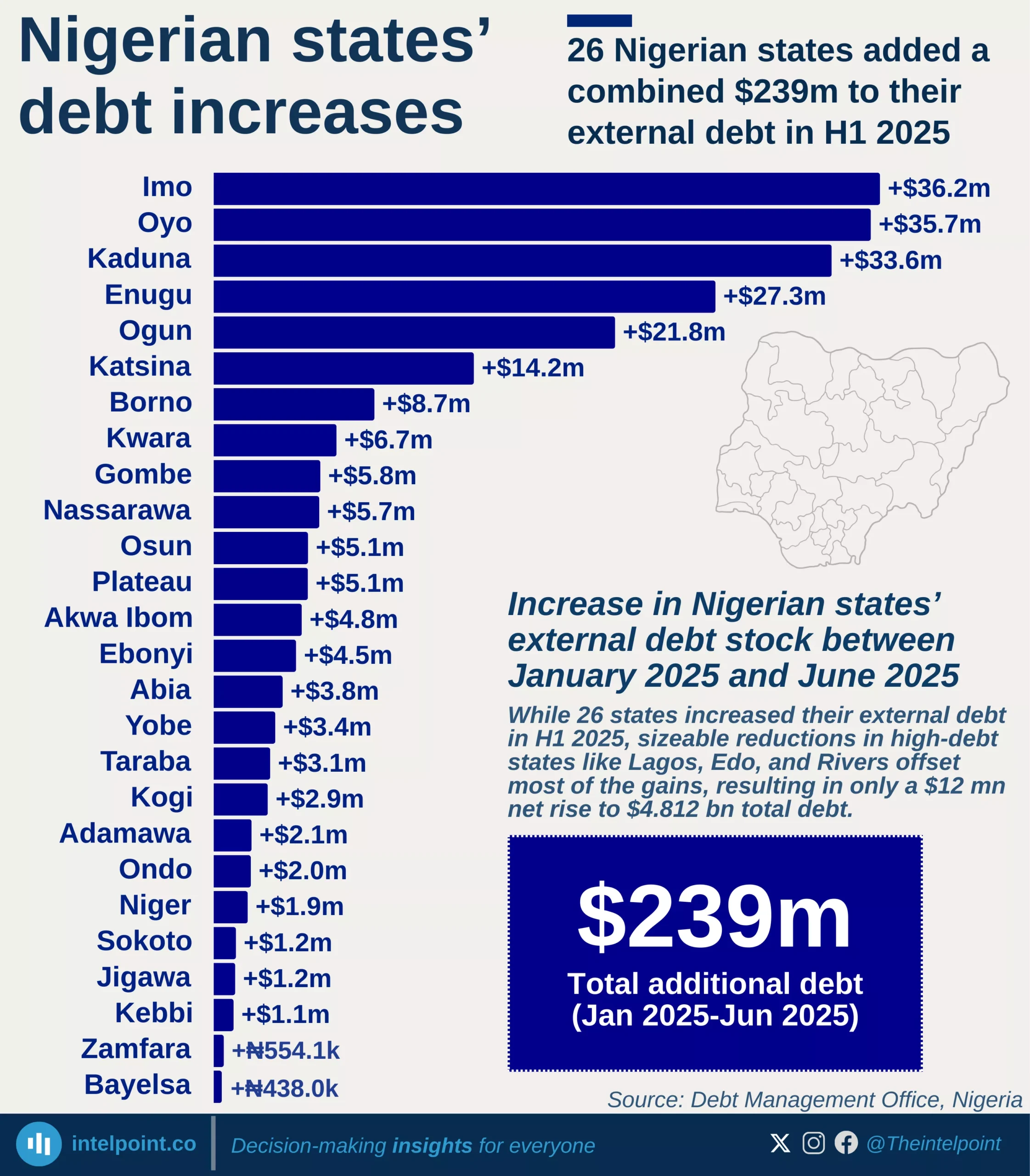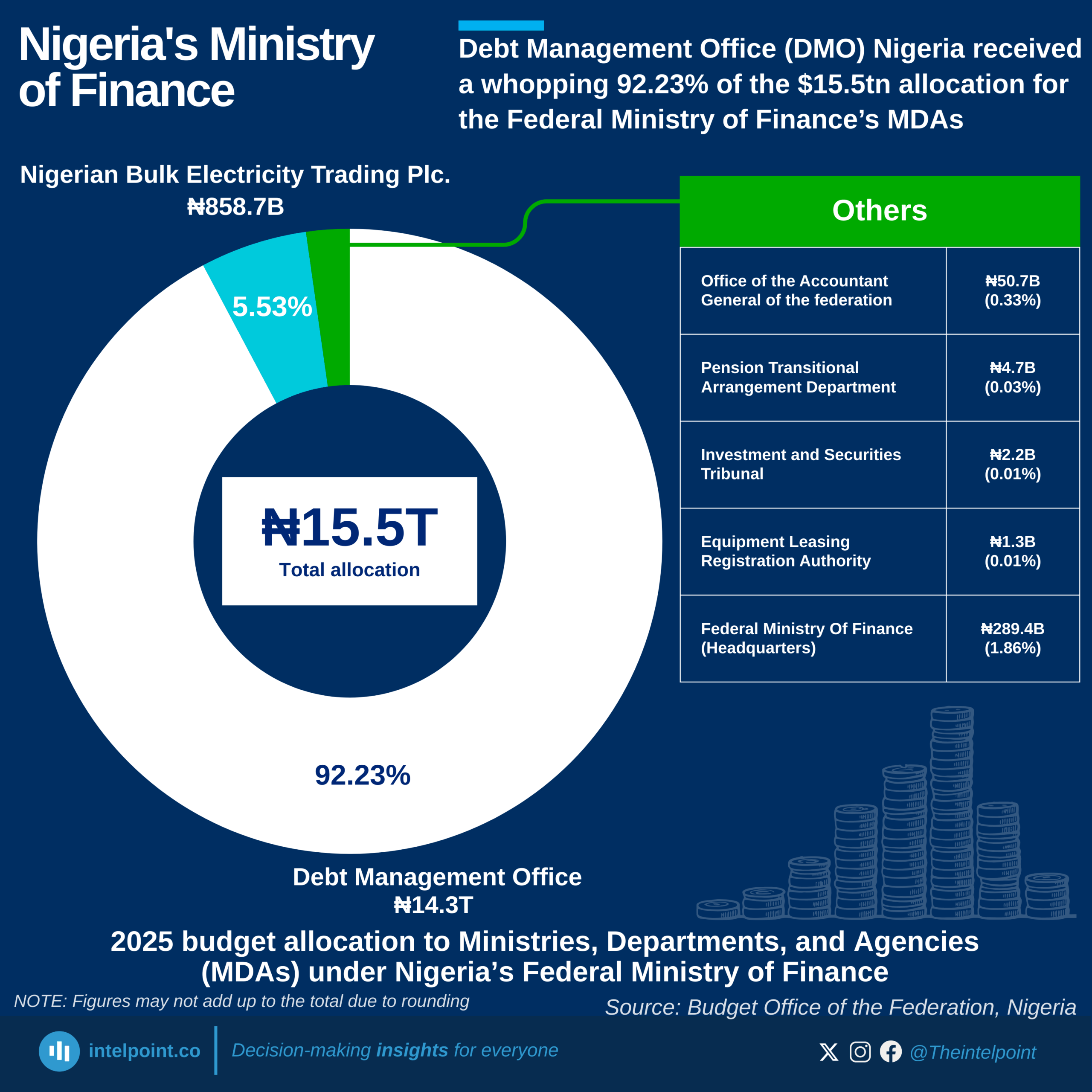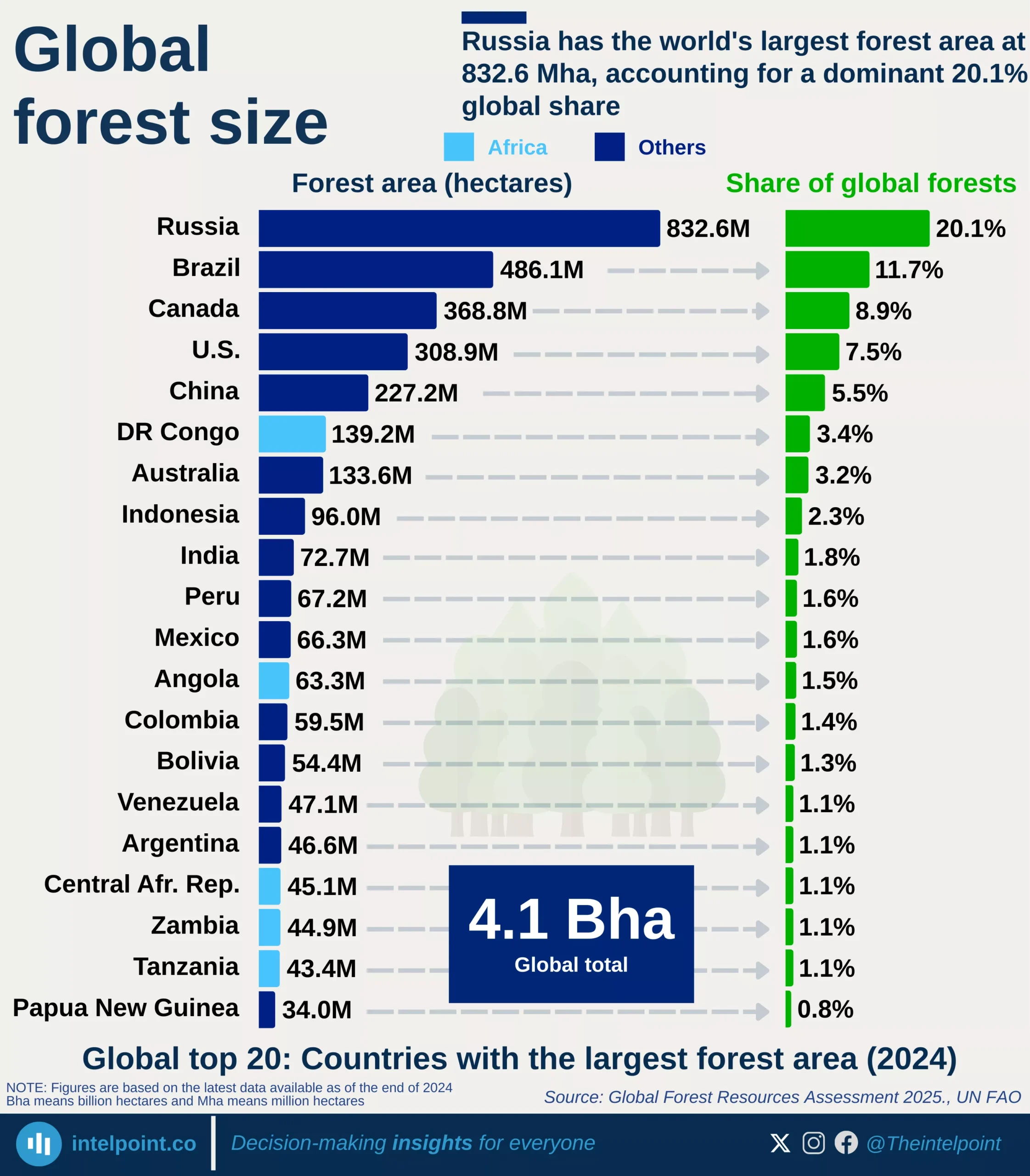Africa’s total reserves, including gold, stood at $450 billion in 2023. North Africa, with 53.8% of the total reserves, is the dominant force. In contrast, East Africa holds only 4.4%. West Africa holds 17.6% Southern Africa, accounting for 20.3%, benefits from South Africa’s strong reserves. Central Africa fares the worst with just 4%, which leaves the region particularly exposed to economic shocks.





